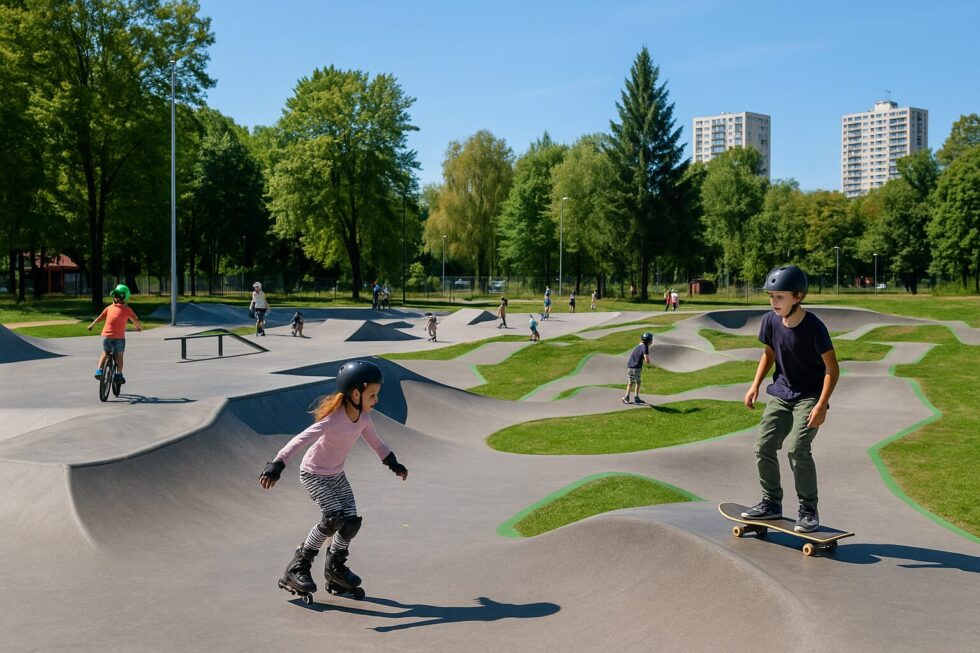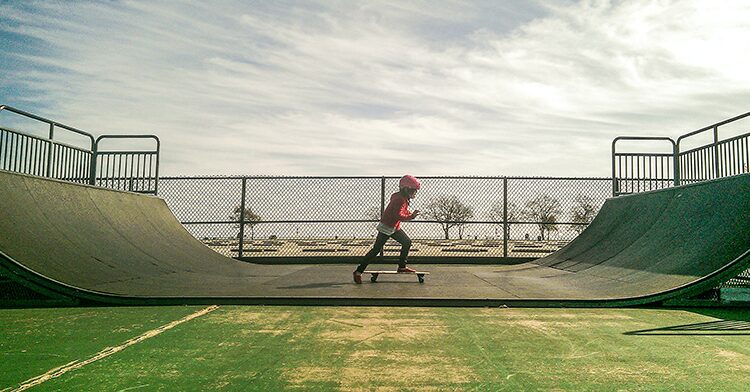Where to find free skateparks and pumptracks in Berlin, Frankfurt and Munich

Skateparks and pumptracks are no longer just places for skateboard tricks or BMX jumps — they have become cultural hubs and essential parts of urban life in Germany. Over the past decade, Berlin, Frankfurt and Munich have invested heavily in public sports infrastructure, building modern, free facilities accessible to children, teenagers, and adults. Funded by city budgets and sometimes supported by EU programs, these spaces combine sport, health and community. Families often use them for weekend activities, while young riders see them as training grounds to improve their skills. The growth of skateparks is also linked to public health strategies, encouraging citizens to spend more time outdoors and stay active. As highlighted by G.business, interest in such spaces is growing every year, making German cities leaders in urban sports culture.
Skateparks in Berlin: culture and sport combined
Berlin, known for its alternative lifestyle and vibrant youth culture, naturally offers some of the most diverse and creative skateparks in Germany. The capital has over 25 free skateparks and several pumptracks spread across districts, making them accessible by bike or public transport. Many are built in concrete, with bowls, rails, and ramps designed for both beginners and professionals. The city also integrates skateparks into green areas, ensuring they become safe meeting places for local communities. Evening lighting in many parks allows skaters to ride until late, especially in popular districts like Friedrichshain or Kreuzberg. Berlin’s skateparks often double as cultural spots where competitions, concerts and art events are organized, reflecting the city’s unique character.
Popular free skateparks in Berlin:
- Skatepark Gleisdreieck (Kreuzberg) – a large concrete park with bowls and street sections, Möckernstr. 26.
- Skatehalle Berlin (outdoor free section) – near Warschauer Str., Friedrichshain.
- Skatepark Mellowpark (Treptow) – one of Europe’s biggest youth parks, with free pumptrack access.
- Skatepark Hasenheide (Neukölln) – centrally located in a park, with rails and small ramps.
- Skatepark Falkplatz (Prenzlauer Berg) – family-friendly, with sections for kids and teens.
Pumptracks and skateparks in Frankfurt: compact but modern
Frankfurt may be best known as Germany’s financial capital, but it is also investing in youth and sports culture. Although the city has fewer skateparks than Berlin or Munich, the facilities are modern and easily accessible. Many are integrated into public parks and residential neighborhoods, making them ideal for families and local communities. Frankfurt’s pumptracks are particularly popular among younger children learning balance and coordination. The city emphasizes safety and inclusivity, ensuring that every district has at least one public facility for skating, BMX, or scooters. For visitors, skateparks also provide a refreshing alternative to the city’s business environment.
Key free skateparks in Frankfurt:
- Skatepark Hafenpark – on the River Main, near ECB, one of the most modern in Germany.
- Skatepark Niddapark – located in the green belt, suitable for BMX and rollerblades.
- Pumptrack Riedberg – popular among families, beginner-friendly.
- Skatepark Osthafen – industrial style, used by advanced skaters.
- Pumptrack Kalbach – new facility north of the city, with smooth asphalt waves.
Munich: tradition meets urban sport
Munich is famous for its parks and cycling culture, and skateparks fit naturally into this environment. The city offers a mix of large, well-designed concrete parks and smaller pumptracks located in residential areas. Many are family-oriented, with playgrounds and sports fields nearby. Munich also hosts regular skating events, bringing together local communities and international riders. The Bavarian capital combines traditional order with modern urban sports infrastructure, ensuring that facilities are safe, clean, and inclusive. For tourists, skateparks close to the Isar River or Olympic Park add an extra cultural layer to the city’s sporty image.
Best free skateparks in Munich:
- Skatepark Hirschgarten – one of the largest in Europe, fully concrete, open daily.
- Skatepark Olympiapark – near the Olympic Village, great for BMX and scooters.
- Pumptrack Neuperlach – family-friendly, designed for children and beginners.
- Skatepark Westpark – integrated in a green area, ideal for evening sessions.
- Pumptrack Sendling – compact but modern, accessible by U-Bahn.
Health benefits of skating, rollerblading and cycling
Skateboarding, rollerblading and cycling are not just fun — they are proven to improve physical and mental health. Regular riding strengthens leg, core and back muscles, improves balance, and increases cardiovascular endurance. It also reduces stress and boosts mood thanks to endorphin release. For adults with sedentary jobs, skateparks and pumptracks offer an ideal way to stay active outdoors. According to WHO, children aged 6–17 should engage in at least 60 minutes of physical activity daily, while adults need 150 minutes of moderate activity weekly. Skating and cycling perfectly fit these recommendations and are more engaging than traditional workouts.
Calories burned per hour and daily recommendations:
| Activity | Calories/hour (adult 70 kg) | Calories/hour (child 40 kg) | Suggested daily time |
|---|---|---|---|
| Skateboard | 350–500 kcal | 200–300 kcal | 30–45 minutes |
| Rollerblades | 400–600 kcal | 250–350 kcal | 30–60 minutes |
| Bicycle | 450–650 kcal | 280–400 kcal | 40–60 minutes |
Why these sports are especially important for children
For children, skateparks and pumptracks are not only playgrounds but also developmental spaces. Riding improves coordination, reflexes and balance, while also teaching patience and resilience. It is also a social activity — kids learn teamwork, fair play, and build friendships. Pediatricians recommend splitting activity into two sessions (morning and afternoon) for better energy balance. Parents should ensure children use protective gear, especially helmets and knee pads. In safe environments, skateparks become natural gyms that combine fun with healthy habits.

Tips for parents:
- Aim for at least 60 minutes of daily riding.
- Choose beginner-friendly pumptracks with soft asphalt.
- Always use helmets and pads.
- Visit parks during less crowded hours.
Safety rules every rider should follow
While skateboarding and BMX can look extreme, most injuries are preventable with proper equipment and rules. Helmets reduce serious head injury risk by over 60%, and protective pads prevent bruises and fractures. Riders should respect turn-taking on ramps and avoid overcrowding. Beginners should start with small obstacles and gradually progress. In the evenings, cyclists and skaters should wear reflective gear or lights. Parents supervising children play a crucial role in ensuring safety.
Golden rules:
- Always wear a helmet.
- Use pads and gloves.
- Never ride on public roads.
- Respect turn-taking on ramps.
- Warm up before each session.
City comparison
| City | Number of skateparks | Number of pumptracks | Key features |
|---|---|---|---|
| Berlin | 25+ | 6 | Large concrete complexes, cultural spots |
| Frankfurt | 8+ | 3 | Modern, compact, riverside and parks |
| Munich | 15+ | 4 | Family-oriented, Olympic Park and Isar areas |
Berlin, Frankfurt and Munich each have their own skatepark culture. Berlin offers the widest variety, with large, alternative-style parks that reflect its creative spirit. Frankfurt has fewer but very modern, compact facilities, often placed in green belts or riverside areas. Munich combines tradition and sport, offering family-friendly skateparks in safe, well-maintained locations. Together, these cities form the backbone of Germany’s skateboarding and BMX scene, comparable to top European hubs.
Google Maps links to skateparks
Berlin
Gleisdreieck Skatepark • Mellowpark • Hasenheide
Frankfurt
Hafenpark Skatepark • Niddapark • Pumptrack Riedberg
Munich
Hirschgarten Skatepark • Olympiapark Skatepark • Pumptrack Neuperlach
Free skateparks and pumptracks in Berlin, Frankfurt and Munich are more than just sports facilities — they are open spaces where health, culture and community meet. They give children safe environments to develop skills, adults opportunities to stay fit, and cities tools to promote active lifestyles. With their mix of tradition, modernity and creativity, these three cities set standards for the future of urban sports in Germany. Whether you are a beginner or a professional, these parks invite everyone to ride, learn and connect.
Stay connected for news that works — timely, factual, and free from opinion — and insights that matter now: How to Choose Running Shoes and Apparel in Germany: Tips, Prices and Best Stores 2025
Foto: Miejskie Sporty